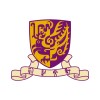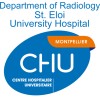
Study of Predictive Factors Related to Prognosis of Patients With Ischemic Stroke Due to Large-artery...
Ischemic StrokeLarge-Artery Atherosclerosis (Embolus/Thrombosis)This is a single-center prospective cohort study of predictive factors related to prognosis of ischemic stroke due to large-artery atherosclerosis. From March 1, 2021 to December 31, 2026, 1000 patients with ischemic stroke due to large-artery atherosclerosis who are admitted to the Department of Neurology or Neurosurgery, Tongji Hospital are going to be recruited. Detailed clinical data in emergency room and in-hospital will be obtained from the medical record reviews, and the National Institutes of Health Stroke Scale (NIHSS) and Modified Rankin Scale (mRS) score will be done by certified neurologists to assess the severity of the disease in acute stage and treatment outcome during the follow-up. All cases will undergo routine blood tests, brain magnetic resonance imaging (MRI) and cerebral vascular examination, such as TCD, CTA, HRMR or DSA. The investigators will analyze the in-hospital factors that could predict the outcome to provide more evidence-based suggestions in the treatment and prognosis of atherosclerotic ischemic cerebrovascular disease.

Improving Low ASPECTS Stroke Thrombectomy
Acute Ischemic StrokeImproving Low ASPECTS Stroke Thromectomy (I-LAST) is an academic, independent, prospective, multicenter, observational registry study. Consecutive patients treated with endovascular stroke treatment will be enrolled in German stroke centers. Patients receive regular care and data will be collected as part of clinical routine. Baseline clinical and procedural information as well clinical follow-up information during in-hospital stay, and up to 90 days of stroke onset are collected. Data collected include demographics, National Institute of Health Stroke Scale (NIHSS) on admission, pre-treatment ASPECTS, information on timing and success of interventional treatment, procedural complications, intracranial hemorrhage, and functional outcome. Advanced imaging biomarkers will be tested and validated aiming to improve treatment selection and outcome prediction of patients presenting with extensive baseline infarction.

Clinical Research of Intravenous Thrombolysis for Ischemic Stroke in Northeast of China
Ischemic StrokeThrombosisThis research is based on clinic treatment of intravenous thrombolysis for patients with acute ischemic stroke.By building up a database of these patients, the investigators aim to find some significance between groups by analyzing population information, clinical status and such for better evaluation and optimal treatment decision.

Phase ⅡStudy of Pinocembrin Injection to Treat Ischemic Stroke
Ischemic StrokeThis research is a Randomized, double-blind, placebo-controlled, multicenter clinical study. Chinese subjects with Ischemic Stroke.

Morphology of Advanced Symptomatic Cerebral Plaques With High Embolic Potential
Ischemic StrokeAtheroscleroses1 moreThe study is to attain early recognition of the unstable plaques which have an imminent embolic risk in patients with intracranial atherosclerotic disease (IAD).

Sensitivity to Acute Cerebral Ischemia in Migrainers
Ischemic StrokeMigraine1 moreSensitivity to Acute Middle cerebral or intracranial Carotid artery Occlusion in MIGrainers (SMCO-MIG) is a prospective multi-center study to determine if migraine induces a faster infarct growth as assessed by initial multimodal imaging.

The Association of Omentin and Ischemic Stroke
StrokeBrain Ischemia2 moreThis observational study aims to research whether there is a relationship between omentin and ischemic stroke on the aspects of incidence, severity, and recovery etc.

Brain, Blood And Clot or Tissue Registry And Collaboration
Acute Ischemic StrokeCerebrovascular DisordersThis is a prospective open enrollment biorepository to collect and evaluate blood and tissue collected during cerebrovascular procedures, which will then be used for the purposes of identifying biological markers, inflammatory cell infiltrates, and biological states in stroke and other cerebrovascular diseases in the human condition. The study population will include up to 1000 subjects, consisting of up to 800 cerebrovascular disease subjects and up to 200 control subjects. Male and female participants 18 years of age and older will be enrolled. This protocol covers the procurement of biological samples from patients undergoing any cerebrovascular surgery and/or neurointerventional clinical procedure at University of Kentucky. Control participants will include patients undergoing non-emergent, elective diagnostic cerebral angiography as well as patients undergoing emergent angiogram cases. This study represents the first time that tissue, clot and blood will be evaluated for the markers, proteins, and cytokines in human subjects undergoing cerebrovascular procedures. By starting with the human condition, the investigators aim to minimize this loss in translation. Overall, this study will have a great impact on our knowledge of stroke pathology. In essence, this could fundamentally change not only how the investigators develop treatment strategies for the stroke patient population but allow us to individualize the treatment dependent on time after stroke, age, sex, and co-morbidities. Molecular techniques that are impractical when delivered systemically could be delivered locally to impede the early inflammation. This research aims to advance understanding of cerebrovascular disease and to support the development of improved therapies.

Gut Microbiota in Acute Stroke Patients
StrokeStroke5 moreThis study is to find out the significance of gut-microbiota in acute stroke patients, including their neurological, radiological outcomes as well as their stroke mechanisms.

Tigertriever Distal Vessels Registry
Ischemic StrokeA registry study to collect data on the Tigertriever device at restoring blood flow by removing clots in M2 or distal vessels in patients experiencing acute ischemic stroke, during commercial use.
